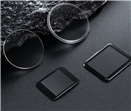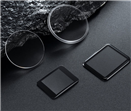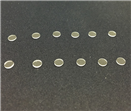

Time:2025-07-31
With the rapid development of smartphone technology, users have increasingly high demands for screen durability and display effects. In this context, sapphire lenses, as a high-performance material, have gradually entered the vision of mobile phone manufacturers and have been applied in some models. This article will explore its current application status in the field of mobile phones from multiple perspectives.
1、 Characteristics and advantages
Sapphire lenses are not natural gemstones, but are made from artificially synthesized single crystal aluminum oxide (Al ? O3). Its Mohs hardness reaches level 9, which gives it high scratch resistance, and it is almost never scratched by common hard objects such as keys and gravel in daily use. In addition, the transmittance of sapphire lenses can reach over 90%, and they have excellent high temperature resistance and chemical stability, maintaining stable performance even in harsh environments.

2、 Technical bottlenecks and cost challenges
Despite the excellent performance of sapphire lenses, their large-scale application still faces significant obstacles. The first and foremost issue is the cost problem, which is mainly due to the high difficulty of purifying the raw material alumina and the need for crystal growth to be completed in a high-temperature environment above 2000 ℃ for several weeks. In addition, sapphire processing is difficult and requires diamond tools for cutting and polishing. Another key bottleneck is impact resistance. Although sapphire has high hardness, its toughness is poor and it is prone to fracture when subjected to frontal impact.
3、 Market situation and consumer choice
At present, the penetration rate of sapphire lenses in smartphones is still less than 5%, mainly concentrated in models priced above 5000 yuan. However, it is worth noting that the sensitivity of ordinary consumers to screen materials is decreasing, and more people are paying attention to explicit innovations such as foldable screens and high refresh rates. And when the hardness of the screen glass reaches level 7, daily scratch resistance is sufficient, and the marginal benefits of continuing to pursue sapphire are limited. Therefore, sapphire may appear more as a differentiation selling point rather than a mass configuration.
The application of sapphire lenses in the field of mobile phones will show a trend of "specialization", and in the short term, it may continue to deepen its focus on segmented scenarios such as camera protection; In the medium to long term, with the breakthrough of composite materials, hybrid structural solutions may emerge. In this sense, the industry story of sapphire lenses is essentially an eternal game of technological innovation and commercial rationality.






Tel
Mobile phone
Customer service
TOP